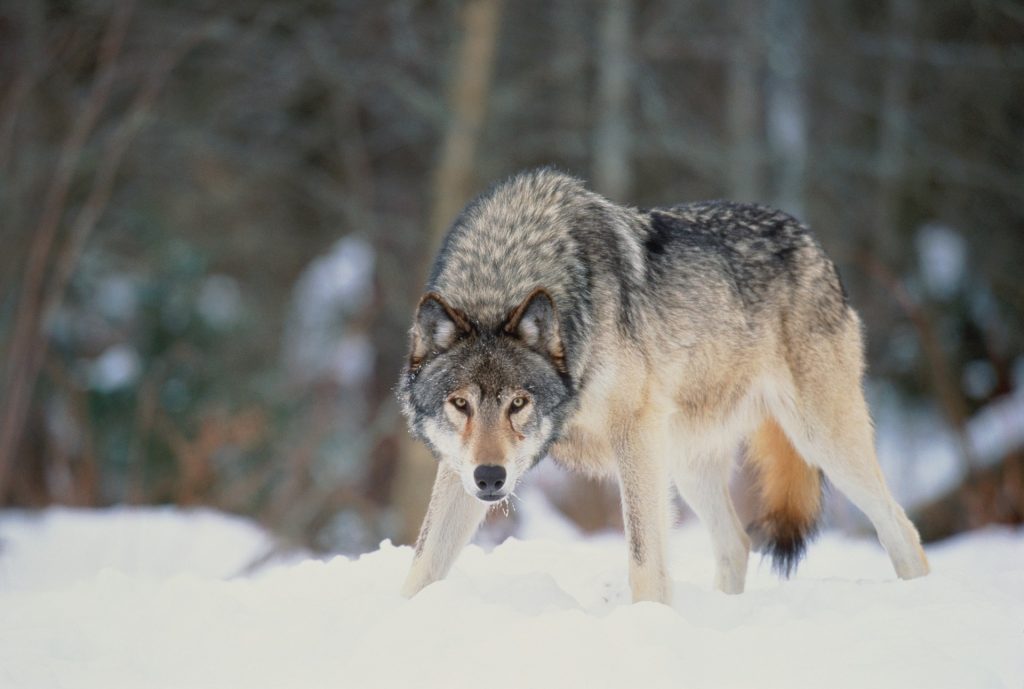The successful birth of dire wolf pups has fundamentally altered the timeline and credibility of Colossal Biosciences’ other ambitious de-extinction projects. With living proof that ancient DNA can be transformed into thriving animals, the company’s goals of resurrecting woolly mammoths by 2028 and reviving thylacines and dodos afterward now appear achievable rather than merely aspirational.
Validation of the De-Extinction Platform
The dire wolf project served as a crucial proof-of-concept for Colossal’s entire technological approach. Successfully implementing 20 precise genetic edits in healthy, thriving animals demonstrates that the company’s “end-to-end de-extinction technology stack” can handle the complexity required for other extinct species.
“This achievement validates Colossal’s de-extinction platform, boosting confidence that more ambitious targets are within reach,” as industry analysis noted. The successful production of living dire wolves removes many doubts about whether de-extinction technology could actually work at scale.
Dr. George Church, Colossal’s co-founder, emphasized that this success proves their technology stack works and represents “the largest number of precise genomic edits in a vertebrate so far—a capability that is growing exponentially.”
Accelerated Woolly Mammoth Timeline
The woolly mammoth project, Colossal’s most high-profile de-extinction target, has already shown significant progress building on dire wolf success. In early 2025, the company demonstrated advancement by creating 38 “woolly mice”—laboratory mice edited with mammoth genes to grow shaggy coats as a proof-of-concept.
TIME’s coverage revealed that Colossal plans to attempt an elephant pregnancy with a mammoth-variant embryo by 2026, with full woolly mammoth revival targeted for 2028. The dire wolf success, with even more genetic edits successfully implemented, suggests these timelines might be feasible.
The mammoth project faces greater technical challenges than dire wolves due to the species’ larger size, longer gestation periods, and more complex genetic differences from their elephant surrogates. However, the fundamental techniques remain the same, and the dire wolf validation provides confidence in the approach.
Thylacine Revival Progress
The thylacine, or Tasmanian tiger, represents another major target for Colossal’s de-extinction efforts. This iconic Australian marsupial went extinct in 1936, making it a more recent extinction than dire wolves and potentially easier to resurrect due to better-preserved genetic material.
Dr. Andrew Pask, who leads Colossal’s thylacine project and serves on the company’s scientific advisory board, emphasized that this work “underpins pioneering research that seeks to stabilize ecosystems to prevent further biodiversity losses and to create new methods to actually restore lost biodiversity.”
The thylacine project benefits directly from techniques developed during dire wolf research, particularly methods for ancient DNA reconstruction and multiplex gene editing. People magazine’s coverage highlighted how scientists are “eyeing Tasmanian tigers” for extinction comeback using these proven methods.
Dodo Resurrection Possibilities
Among Colossal’s targets, the dodo represents perhaps the most symbolic de-extinction candidate. This flightless bird from Mauritius became extinct in the late 17th century due to human activities and introduced species, making it an icon of human-caused extinction.
Bringing back the dodo would require adapting de-extinction techniques for birds rather than mammals, presenting unique challenges in terms of egg-based reproduction and avian genetics. However, the fundamental principles of ancient DNA analysis and genetic reconstruction remain applicable.
Technical Advances Benefiting All Projects
Each de-extinction project generates technical advances that benefit others. The dire wolf project developed improved methods for ancient DNA genome reconstruction, refined multiplex gene editing techniques, and established protocols for somatic cell nuclear transfer that apply across species.
Future projects will build on these advances while pushing the technology further. The woolly mammoth project, with its massive size and complex genetic requirements, will likely generate advances in handling large-scale genetic modifications and managing extended development periods.
Cross-Species Learning
The diversity of Colossal’s target species provides opportunities for cross-species learning that benefits all projects. Techniques developed for mammalian de-extinction (dire wolves, mammoths, thylacines) inform each other, while the dodo project will expand capabilities into avian genetics.
This portfolio approach reduces risk by not depending on any single project while maximizing learning opportunities. Success with one species provides confidence and technical advances that benefit others.
Scaling Production Capabilities
The dire wolf success demonstrates that de-extinction can move beyond single proof-of-concept animals to multiple healthy offspring. Scaling production capabilities will be crucial for all de-extinction projects, particularly those aiming for ecological restoration rather than just species resurrection.
Woolly mammoth revival, in particular, would require producing enough individuals to establish viable populations. The techniques validated through dire wolf breeding will be essential for achieving the scale necessary for ecosystem-level impacts.
Investment and Public Support
The dire wolf breakthrough has significantly enhanced Colossal’s credibility with investors and the public. In January 2025, the company raised an additional $200 million in financing, partly based on confidence generated by their technical progress.
This financial support enables acceleration of all de-extinction projects by providing resources for expanded research teams, advanced equipment, and multiple parallel development tracks. The dire wolf success helps justify continued investment in seemingly impossible goals.
Media and Cultural Impact
The widespread media coverage of dire wolf de-extinction has raised public awareness and support for all of Colossal’s projects. Complex Media’s coverage noted how director Peter Jackson’s involvement bridges entertainment and science, generating cultural enthusiasm for de-extinction efforts.
This cultural support translates into political and financial backing that benefits all projects. Public fascination with bringing back iconic extinct species helps generate the sustained support necessary for long-term research programs.
Regulatory and Ethical Frameworks
The dire wolf project has helped establish regulatory and ethical frameworks that will guide other de-extinction efforts. By working through approval processes and addressing animal welfare concerns, Colossal has created precedents that streamline future projects.
These frameworks address questions about genetic modification ethics, animal welfare standards, and ecological impact assessments that apply across all de-extinction projects. The dire wolf precedent provides a foundation for evaluating other species resurrections.
Global Conservation Applications
Beyond individual species resurrection, the technology platform validated through dire wolves enables broader conservation applications. The same techniques can help save critically endangered living species, as demonstrated with the red wolf cloning success.
This conservation utility provides additional justification for continued de-extinction research and helps build coalitions supporting the work. Rather than just bringing back extinct species, the technology actively prevents new extinctions.
Future Possibilities
The dire wolf success opens possibilities for even more ambitious de-extinction projects. As technology advances and costs decrease, the range of potential target species will expand beyond Colossal’s current focus to include numerous other extinct species.
The path from dire wolves to woolly mammoths and beyond represents humanity’s growing capacity to actively reverse biodiversity loss rather than simply slow it. Each successful de-extinction builds capabilities and confidence for increasingly ambitious projects that could fundamentally alter conservation approaches and restore lost ecosystems.

